After hosting the German Beer Tournament, Frau A and I wanted to learn and experience more about the brewing art. So we planned a weekend in the Hallertau region of Germany, which produces one-quarter of the world's hops.
"Hallertau" lies in Northern Bavaria. It's a bit like "Franconia" -- not defined by municipal boundaries, but rather by common history and culture. Hallertau includes parts of 3 districts and it lies 1.5 - 3 hours from Munich.
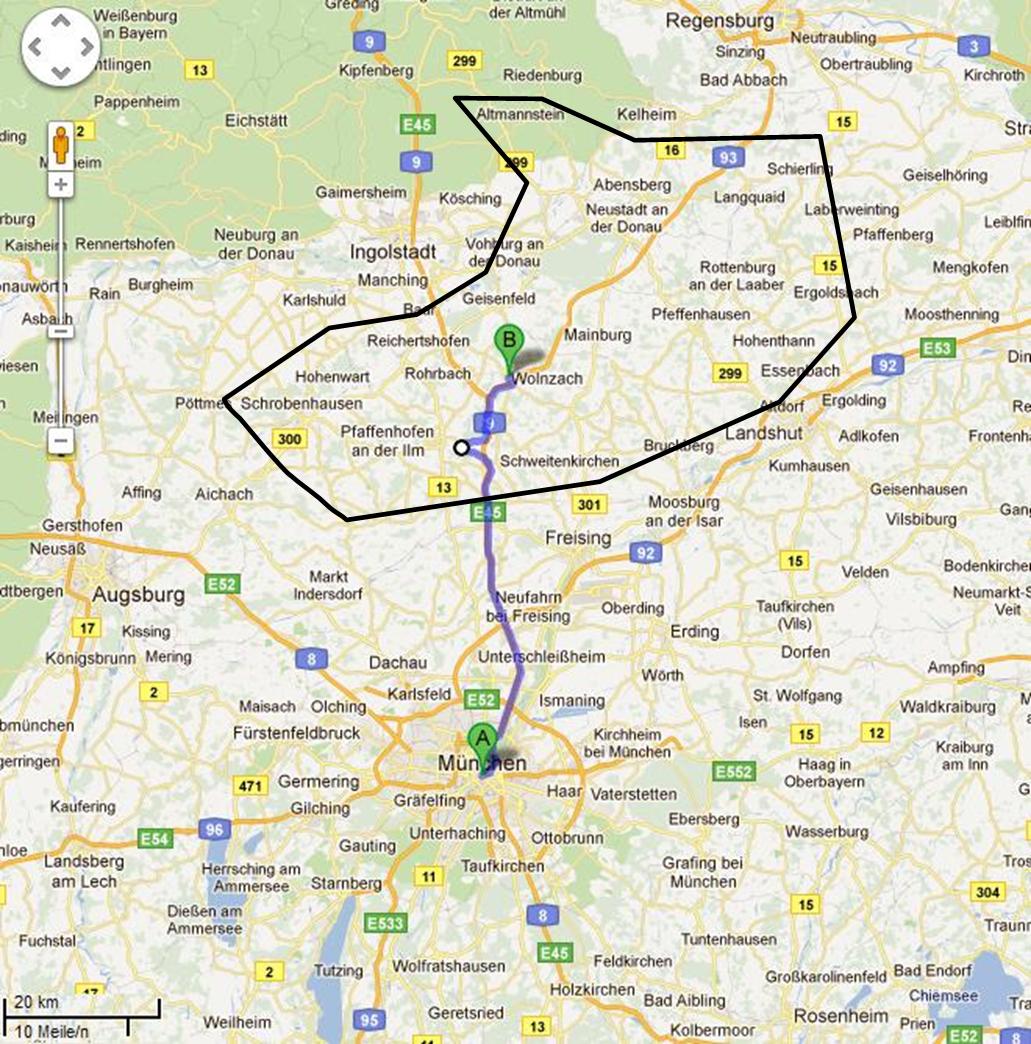
The earliest documents available show hops being cultivated in the Hallertau region since 736. They were only "medicinal" at this time because hops' use in brewing beer started around 1079. Today Germany is the world's #1, producing over 34,000 metric tonnes of hops each year (80% thereof are grown in Hallertau).
"Hallertauer hops" are one of the original four "noble" hops varieties (low in bitterness, high in aroma).
However, this type has been replaced by "Hersbrucker" because the former were highly susceptable to disease.
Interestingly, some towns here are also main figures in production of German white asparagus (Schrobenhausen, Abensberg). Others are more known for being on the shores of the Donau river (Neustadt/Vohburg an der Donau). We decided to stay in Wolnzach because it was centrally positioned for the excursions we had planned...
and it's home to the German Hops Museum (of course, this will be addressed in detail in another blog post).
We've taken the autobahn north from Munich many times, and always see this sign on the road side...
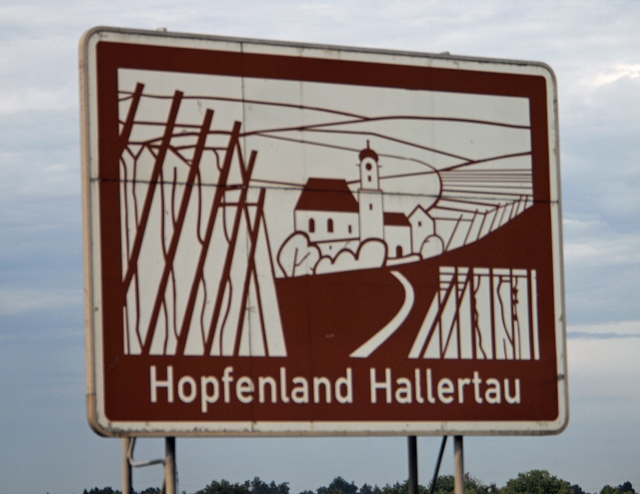
...and this weekend we finally took one of the exits to "Hopfenland". You can see some hops fields from the autobahn, but once you get onto the local roads you really start to get a sense of their size and scope. In the second photo below you'll notice that it was harvest time - we saw tractors loaded with hops bines running all weekend:
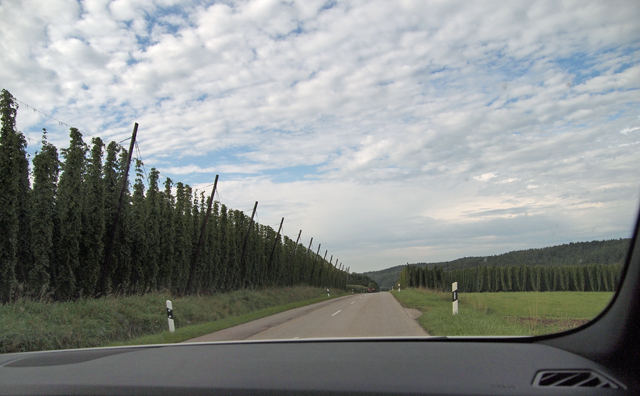
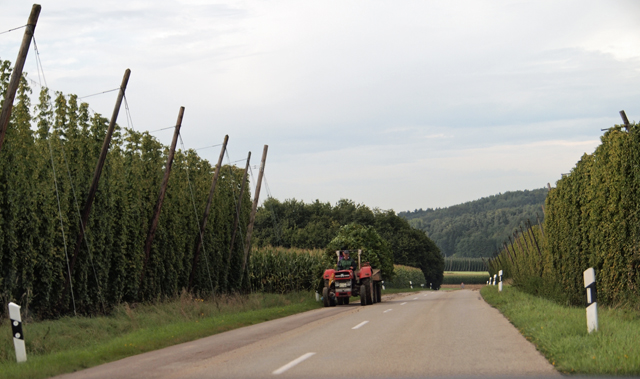
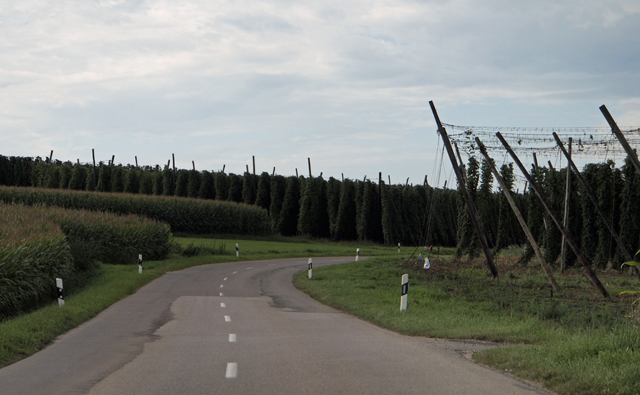
Note: "hops bine" was not a typo in the previous sentence. Hops are bines, not vines because they climb using stems and stiff, downward facing hairs/bristles (rather than vines, which climb using curling tendrils and suckers).
The weekend started well: we photographed a small hops processing barn right across from the hotel.
Tall hops bines were hung onto a conveyor, which fed them into a machine that separates the flowers.
Only female plants are grown, to prevent fertilization - the flowers' resin is useful, but seeds are not.
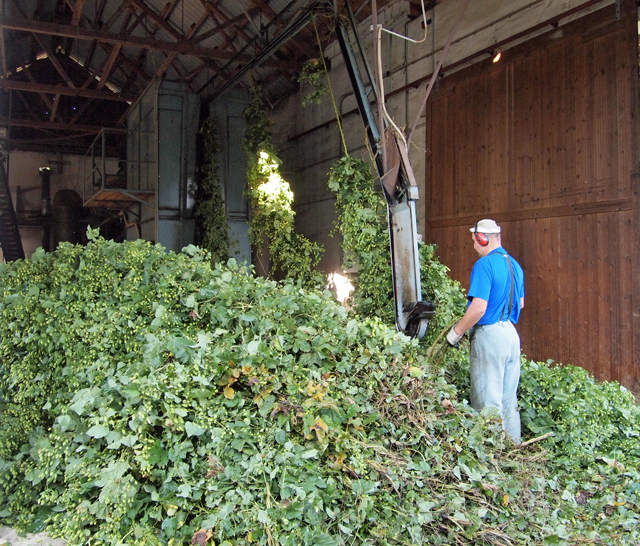
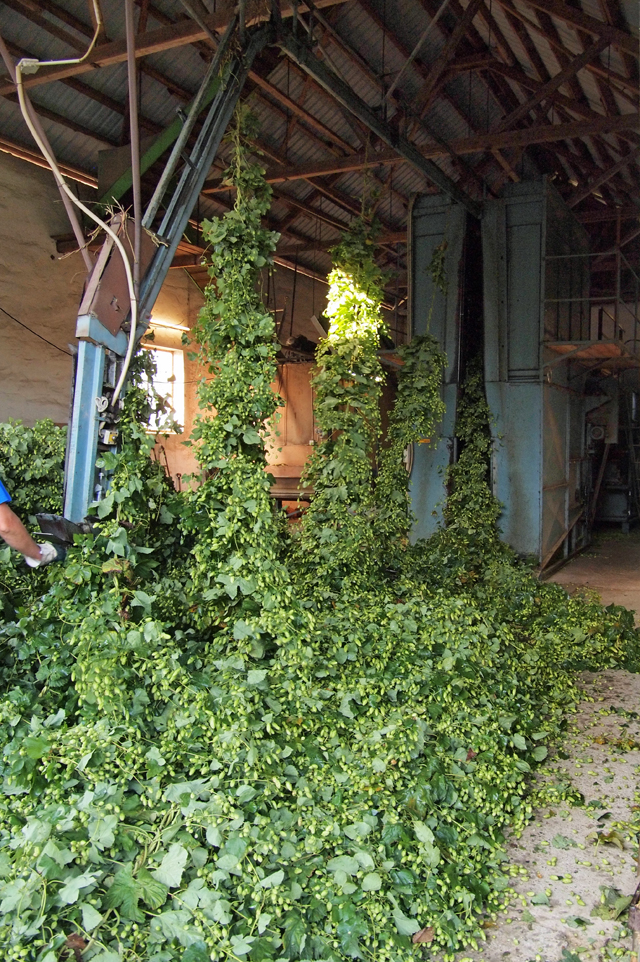
Here's a video of the machine in action - halfway through it zooms in on the "picked" flowers coming out:
More on hops farming and processing in some following posts...
Wolnzach, our base for exploration that weekend, is a town of 11,000 inhabitants. It is also called Markt Wolnzach, because its roots (as early as the year 814) start with an important crossroads and market there.
Interestingly, the German Rail System does not go here directly -- you would have to take a bus from a nearby town. Due to hops farming expansion and newer small industrial firms, Wolnzach has grown 50% since 1987.
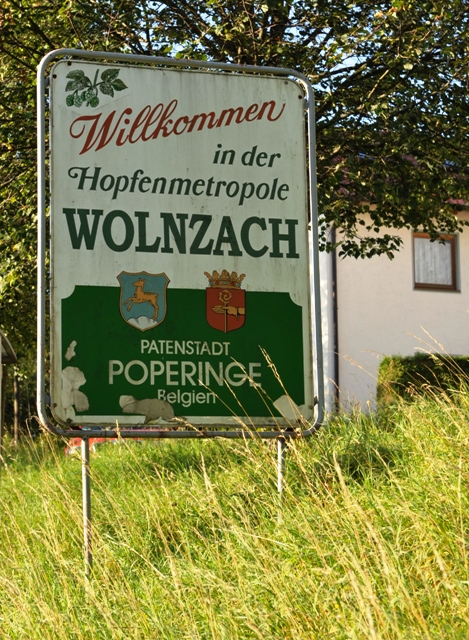 Translation: Welcome to the Hops Metropolis of Wolnzach
Translation: Welcome to the Hops Metropolis of Wolnzach
The new rathaus (town hall) was completed in 1880. It was built with areas to weigh, inspect, and seal hops:
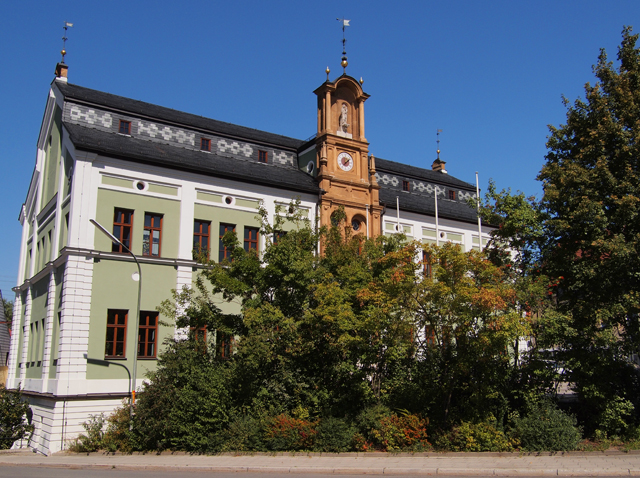
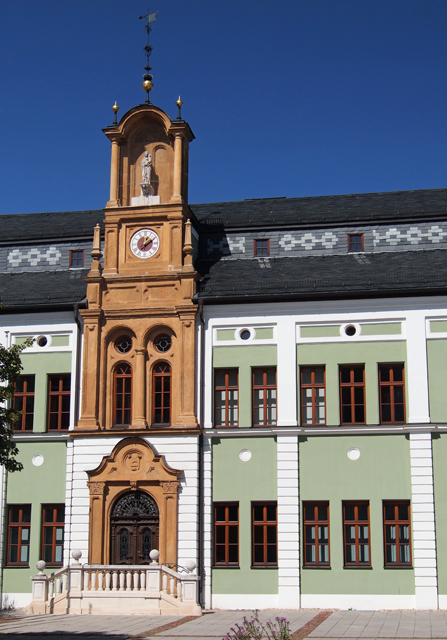

The Saint Laurentius church had its foundations laid in the year 800 and was expanded slightly in 1080.
In 1717 it got a new altar & pulpit, then in 1912 was rennovated to its current size and "new baroque" style:

We were looking for lunch on Saturday, and found the perfect spot at the old post office - a biergarten.
Makes sense - traditionally there was an inn and restaurant at this center of activity, right on the town square:
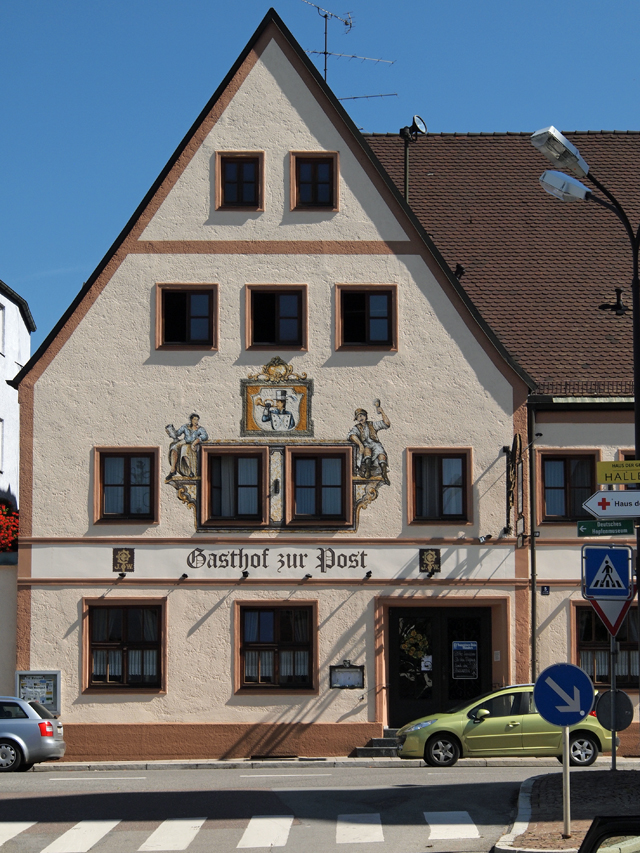
We joined some locals in the shade. The biergarten serves Augustiner, so we shared a helles and a dunkles.
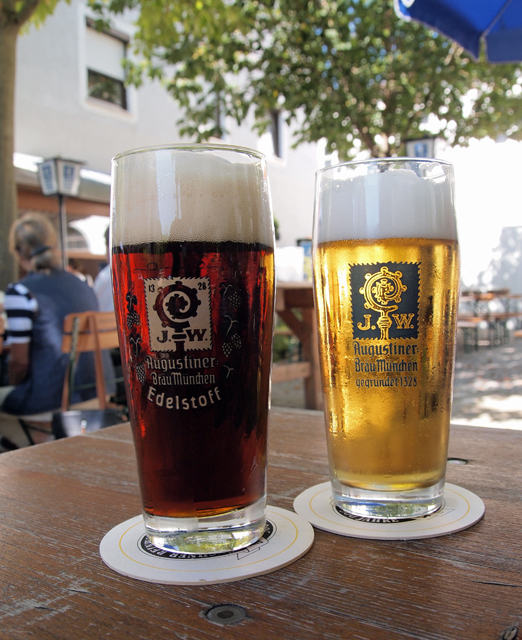
Later that afternoon, we wanted some eis (ice cream)... the local place on the Marienplatz had 5 menus (4 for ice cream, 1 for coffee)! Also, typically German, it had abundant flowers around the outdoor seating area:
On the walk back to the hotel, we saw yet another hops processing barn in action - right there in town!
Rather than using large central processing centers (probably like the U.S. has) Germany has hundreds of small, independent facilities. Many are located right near the fields, while others are in the town center like this one.
That explains why we saw tractors loaded with hops bines moving constantly through town, past the church:
We took the rental car on a number of hops excursions, like the already-posted hops wreath-making.
We'll post the other stories soon, but you should know we traveled in style: upgraded to a BMW 535i!
(Photo below is Frau enjoying the sun, with an empty/just-harvested hops field in the background.)
Coming next: walk through hops fields, the Hops Museum, and visits to a micro- and medium-size brewery...